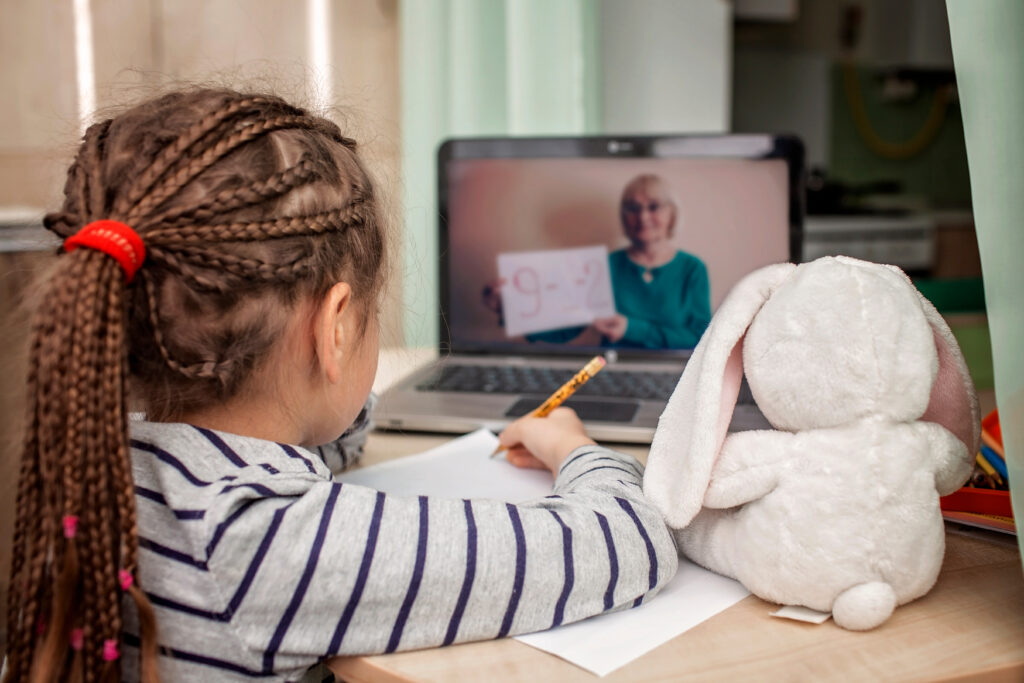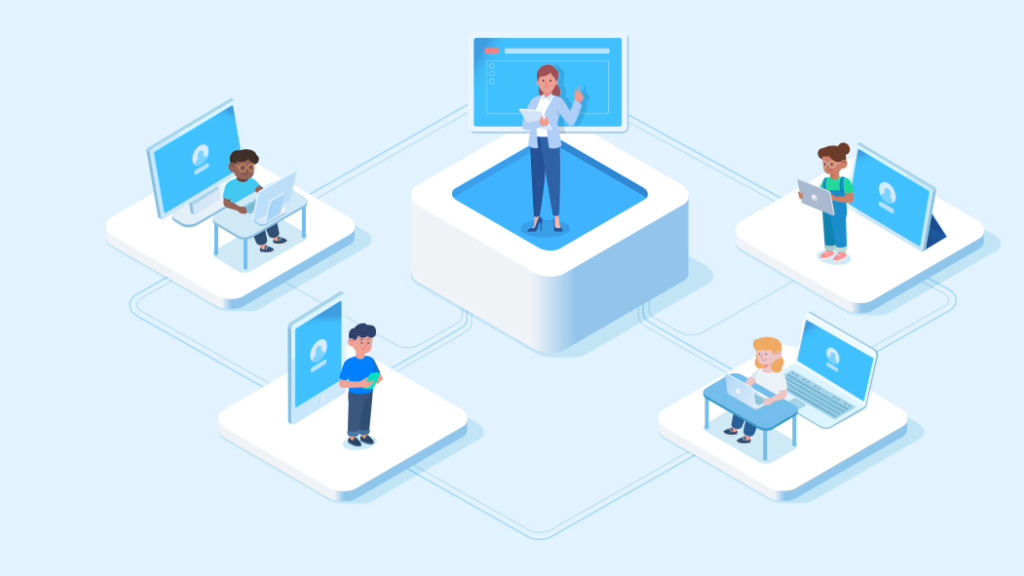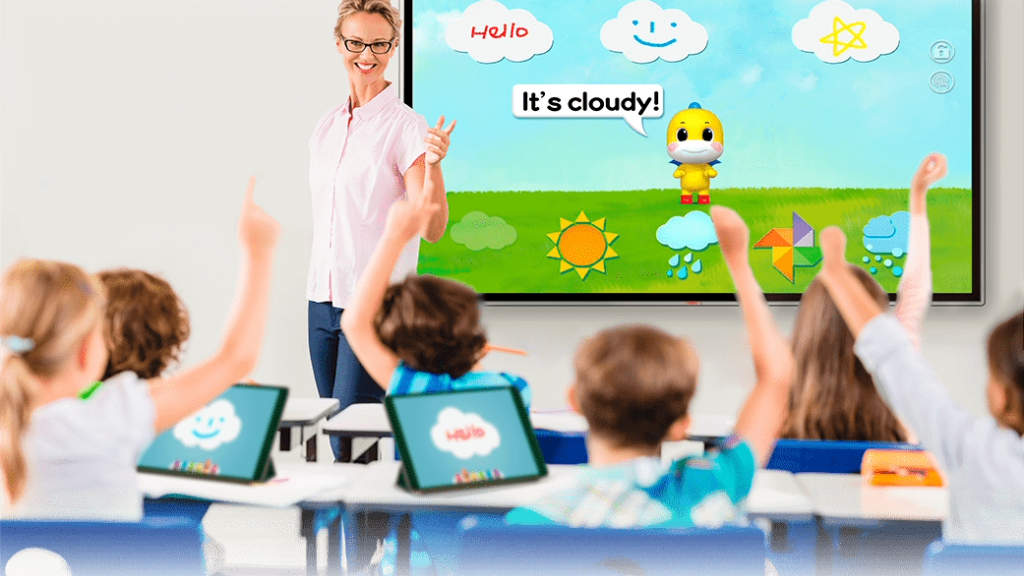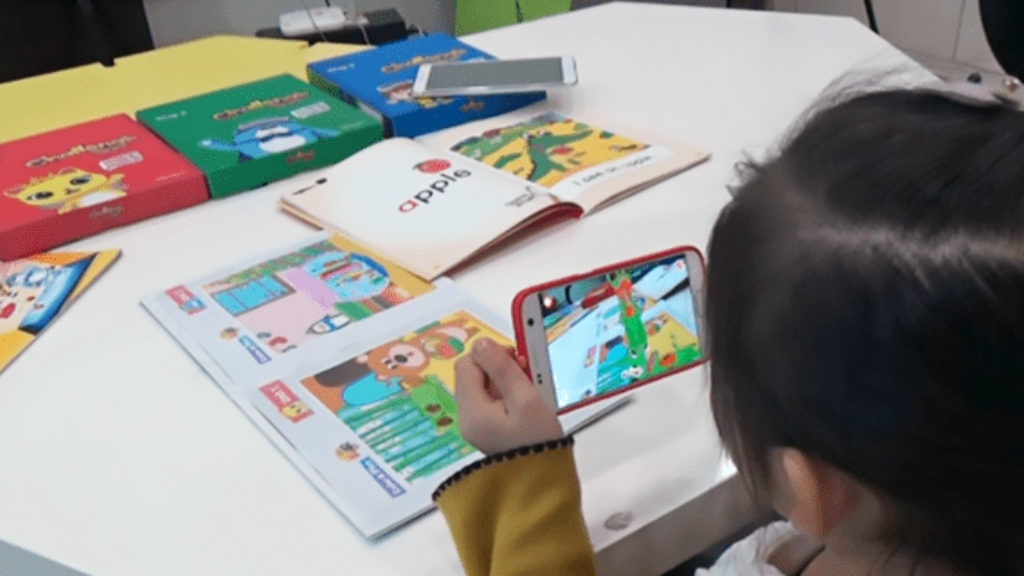Language has always been a core element of human interaction and connection. As the world becomes increasingly connected, the importance of learning and mastering a worldwide language like English has also increased. Over the years, generations of students have struggled to acquire English through a variety of tools and methods. The generational shift in English learning offers insights into the evolution of technology, pedagogy, and global communication.
In this article, we examine how English learning has evolved over the years, from traditional methods to modern-day digital solutions. We will explore how each generation has changed the way English is learned and discuss the factors that have guided this ongoing evolution. In doing so, we will discuss the major milestones of English language teaching and analyze the future of English learning in an ever-changing world.
Are you ready to experience the history, innovations, and cultural changes that have influenced how people around the world learn languages, and English in particular?
Importance of English learning for children
In today’s globalized world, the ability to communicate in English has become an important skill. Whether in business, academia, travel, or technology, English serves as a lingua franca that allows people from diverse backgrounds to connect and collaborate. That’s why it’s more important than ever to help children learn English at a young age to pave the way for greater opportunities and success in the future.
Here are some reasons why learning English as a second language is important for children:
- Encourage empathy: According to Dr. Oren Boxer, neuropsychologist and consultant at BumoBrain, children who grow up speaking at least two languages have greater social understanding.
- Boosting brain function: According to Christine Denger, CEO and founder of Tierra Encantada, a Spanish language immersion program, the ability to speak two or more languages boosts a child’s brain development. Bilingual students have better “planning, problem-solving, concentration and multitasking skills”
- Academic advantage: Bilingual children also have an advantage in school, including in literacy skills. Studies have shown that children who learn a second language make faster progress in learning to read compared to their monolingual peers.

Social/Cultural values acquired through English learning
We need to know how English skills can improve children’s personal and professional lives.
- Expanding educational opportunities: A solid foundation in the English language creates the basic requirements for applying to English-speaking institutions around the world. Many prestigious universities in the U.S., U.K., and other English-speaking countries require international students to demonstrate English proficiency through tests such as the TOEFL or IELTS. When children learn English from a young age, they have access to a wealth of knowledge and resources. This brings them one step closer to a learning environment where they can pursue their dreams and reach their full potential.
- Better job prospects: English is the primary language of international business, science, and technology. Children who are proficient in English are more competitive in the job market because they can work with peers and clients around the world. For example, you could be a young engineer working with an international team on a groundbreaking project or a marketing expert who needs to communicate effectively with global clients. These dream jobs are just a few of the career opportunities available to people who are fluent in English.
- Facilitating travel and cultural exchange: As the world’s most widely spoken second language, English can be an invaluable aid to travelers. Children who learn English have a broader perspective when it comes to exploring new places, making friends, and learning about other cultures.
- Accelerating cognitive development: Research shows that learning a second language, such as English, can boost children’s cognitive development in many ways. For example, children who learn English alongside their native language can develop a more flexible and adaptable way of thinking.
- Easy access to information: There is a vast amount of content available in English, from books and movies to websites and apps. By learning the language, children can use this rich resource to expand their horizons. If our children can read the original version of Harry Potter in English, they will gain a deeper understanding of the story and develop a reading habit that will last a lifetime.
Transformation of English learning
19th Century
During this period, the grammar translation method was used for traditional English learning. The grammar translation method means that a foreign language can be taught or learned through translation.
This method is especially useful in classes with a large number of students. It can save the teacher some work, since he doesn’t have to spend time filling in the syllabus. It works more advantageously when used in a class with students of different levels.
However, oral communication does not take place in the classroom with this method. It does not help students learn the correct pronunciation of the target language. Due to the hierarchical structure of teaching, the teacher has an authoritative role in the classroom. Also, the main interaction is necessarily limited to teacher-student activities.
20th and early 21st century
English learning has evolved from the earlier method of grammar translation to a more active form. Situational language teaching is an approach developed by British linguists between the 1930s and 1960s. Although this teaching method is unknown to many teachers, it has had a significant impact on the entire English learning process.
Situational language teaching aims to promote the development of students’ communication skills. It focuses on teaching language skills in an authentic context.
The main features of the situational language teaching method are:
- Integration of language with content from other subjects: Integrating content from other subjects, such as history, science, and social studies, builds language skills while building knowledge in other areas.
- Real materials and assignments: Emphasis is placed on using real-world materials such as newspapers, magazines, videos, and websites to expose learners to real-world language use. Tasks and activities are designed to reflect real-life situations to encourage practical application of language skills.
- Focus on communication: A major goal of contextualized language instruction is to develop learners’ communication skills, i.e., their ability to use language effectively in a variety of situations for a variety of purposes. In particular, students are encouraged to use the language actively, with meaningful communication taking precedence over simple memorization or grammar exercises.
- Student-centered teaching: Teachers tailor lessons to the needs of individual students and incorporate topics of interest to students. This contributes to a more individualized and motivating learning experience.
- Integrated Skills: Students can learn all four language skills: listening, speaking, reading, and writing. By taking a holistic approach, students can gain a more comprehensive and balanced understanding of the language.
- Cultural awareness: Because language is closely linked to culture, contextual language teaching also aims to promote cultural understanding and appreciation. By exploring the cultural context in which English is used, students gain a deeper understanding of the language and its speakers.
In summary, situational language teaching promotes English learning in real-life situations, supports the development of communication skills, and enhances cultural awareness. By integrating the four skills of listening, writing, speaking, and reading, students become more familiar with the English language.
However, the role of the teacher is very important in this teaching method. Therefore, the learning effect is inevitably lower for teachers with low professionalism. Besides, due to the comprehensive learning plan, students often did not learn the correct meaning of words and sentences. The process of memorizing pronunciation is very important, but this method can also be disappointing for students because the lessons were rather boring.
Present-day
Communicative language teaching (CLT) is a language learning method that focuses on developing learners’ communication skills. The emphasis is on using the target language in real-life situations rather than just learning grammar rules or vocabulary.
The benefits of communicative language teaching include:
- Emphasis on meaningful communication: CLT emphasizes the practical use of language in real-life situations. It helps students develop the ability to communicate effectively in a variety of situations. By focusing on meaningful communication, English learning can become more interesting and enjoyable for students.
- Learner-centered approach: CLT recognizes that students have different needs, interests, and learning styles. Teachers adapt their lessons to meet individual student needs to create a more personalized learning experience.
- Integration of language skills: This method facilitates the integration of listening, speaking, reading, and writing skills into lessons and activities so that students can gain a fuller and more balanced understanding of the target language.
- Promoting interaction and collaboration: CLT encourages students to interact with each other and work together on tasks. They foster the development of basic communication skills and a sense of community in the classroom.
- Cultural awareness and sensitivity: The CLT method allows learners to recognize the importance of understanding the cultural context in which language is used. By integrating cultural elements into language learning, students develop cultural awareness and sensitivity, which are essential aspects of effective communication.
This approach focuses on the use of tasks or activities in which students use English to achieve a specific goal or outcome. This has become a popular and effective way to engage students and develop their communication skills. Communicative language teaching emphasizes student autonomy. Students are encouraged to take responsibility for their learning and develop strategies for self-directed learning.
Technology also makes it easier to integrate real-world or multimedia resources and interactive tools into the classroom. This can enhance the student learning experience and provide an environment and opportunity to practice learning English.
In particular, the addition of online education to traditional face-to-face classrooms has made it possible to learn English in a much more flexible way than in traditional language classes. Students can learn at their own pace using a variety of resources and focus on the areas that need the most support. This approach aims to personalize the language in a way that is more adaptable to the student’s use of the language, taking into account the student’s interests and needs.
It is unfortunate, however, that this method of learning does not take context into account, focusing on fluency rather than precision.
AllviA: the future of English learning
It is impossible to say with certainty what the future of English learning will look like. However, it is clear that the use of EdTech will be a major focus of future English learning. EdTEch companies can use innovative technologies such as artificial intelligence, machine learning, and virtual reality to build an effective English learning environment. Among them, AllviA provides insights into technology and education that differentiates it from its competitors.
Personalized learning
AllviA, established by VISANG EDUCATION with more than 25 years of experience in the education industry, provides a smart learning solution. We offer a tailored approach, adapted to each student’s individual needs, preferences, and learning style.
If you are looking to build a modern hybrid learning environment, check out AllviA’s EdTech solution. We help students learn better with technology by being flexible and responsive to technology. With our EdTech solutions, students can see for themselves what they are missing and what they still need to learn. We also help create a better educational environment by improving teacher productivity and competency.
Digital learning
The era of online education has moved away from the traditional classroom. Classes can now be taught on mobile devices such as tablets and smartphones. But students aren’t just satisfied with mobile learning. They want access online to all the benefits they get in a traditional classroom.
AllviA operates EdTech solutions that can be used in a variety of device environments. Students can learn in a variety of digital environments with AllviA’s solutions, including tablets, smartphones and WINDOWS PCs. Create a location-independent English classroom in tune with the global age.
Flexible learning
A flexible learning environment is essential for future English learning. With technological advances and the changing needs of students, a world has emerged in which students are increasingly connected. Accordingly, it is important to adapt teaching methods and learning spaces to develop the necessary language skills.
AllviA can address the needs of diverse learners by accommodating different backgrounds, learning styles, and language levels. Moreover, by personalizing the learning experience, learners can learn at their own pace, which leads to a boost in motivation. In addition, AllviA’s online platforms, digital tools, and multimedia resources play an important role in creating a flexible learning environment for students.
Want to create a self-directed learning environment by encouraging student autonomy? AllviA’s flexible learning environment encourages collaboration and interaction, helping to develop important communication skills and a sense of community. AllviA’s solutions improve accessibility and inclusion through a variety of learning formats that enable a wide range of English learning. In addition, English learners receive instant feedback on digital activities such as vocabulary exercises, pronunciation skills, and assessments. When schools offer online training, this assessment automation can be one of the biggest benefits.
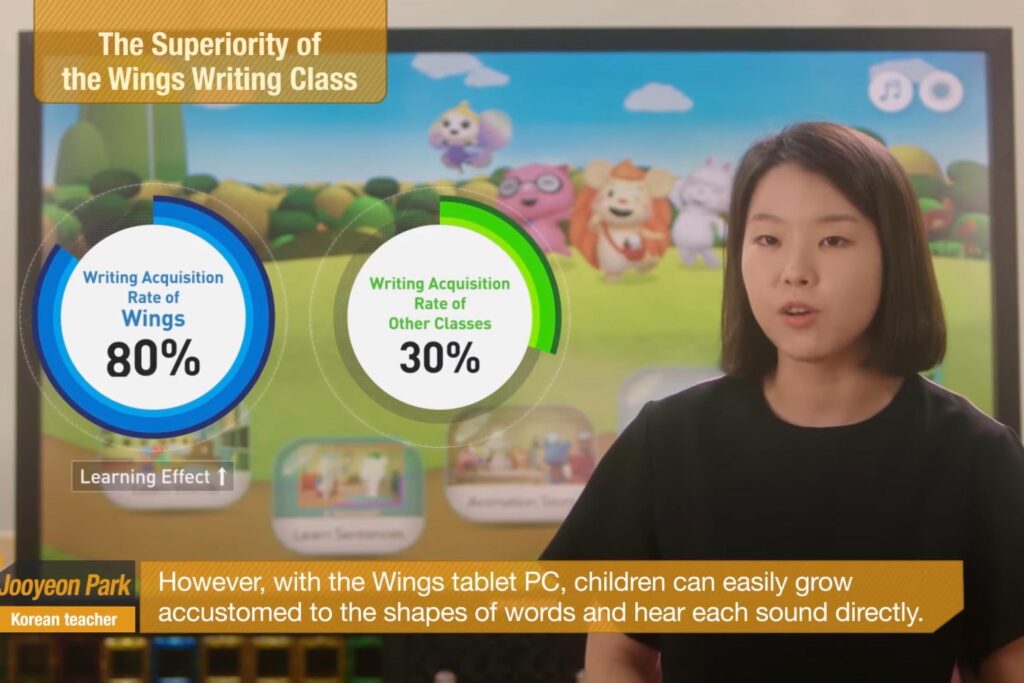
Conclusion: Modern English learning with technology integration determines the future of students
As times change and technology advances, access to new languages is becoming easier. Thanks to technological advances, English learning is much more advanced than in the traditional classroom of the past.
Students in particular can have a more fun and engaging learning experience if they choose the right EdTech solution. Young students can be motivated to excel not only in the classroom, but also in individual daily activities. Create a new English learning environment through student-student and teacher-student communication based teaching.



